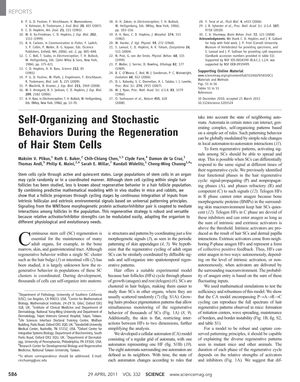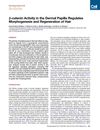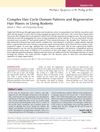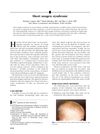Self-Organizing and Stochastic Behaviors During the Regeneration of Hair Stem Cells
April 2011
in “Science”

TLDR Hair stem cell regeneration is controlled by signals that can explain different hair growth patterns and baldness.
The study from April 29, 2011, explored the regeneration of hair stem cells in mice and rabbits, focusing on the role of WNT and BMP signaling pathways. Researchers developed a cellular automaton model to simulate and predict hair follicle cycling patterns. They discovered that hair follicles cycle through growth and rest phases by responding to both intrinsic and extrinsic signals, with the WNT/BMP activator/inhibitor pair being crucial for mediating these interactions. Overexpression of Wnt7a in mice led to altered hair regeneration, such as shortened rest phases, while Wnt3a and Dkk1 beads demonstrated the ability to initiate or disrupt regenerative waves, respectively. In rabbits, hair follicle activations within compound follicles were tightly coupled, showing complex patterns. The study concluded that hair regeneration coordination across stem cell populations is achieved through signal integration, which is adaptable to various conditions and can explain differences in hair growth patterns across species, including the random and independent hair cycling in humans that may contribute to baldness in conditions like androgenic alopecia.
View this study on europepmc.org →
Cited in this study

research β-catenin Activity in the Dermal Papilla Regulates Morphogenesis and Regeneration of Hair
β-catenin in the dermal papilla is crucial for normal hair growth and repair.

research Complex Hair Cycle Domain Patterns and Regenerative Hair Waves in Living Rodents
Mice hair growth patterns get more complex with age and can change with events like pregnancy or injury.

research Short anagen syndrome
Short anagen syndrome involves a hair growth phase lasting 1.5 years.